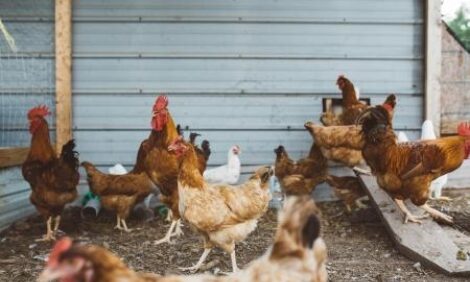



Genetic Parameters of Foot Pad Dermatitis and Body Weight in Broilers
Researchers based in Edinburgh found a genotype × environment interaction for four purebred lines in two environments in terms of the incidence of foot pad dermatitis (FPD). They did not find close genetic associations between FPD and bodyweight but they report that selection against FPD in a highly biosecure environment can improve the genetic merit for birds reared under commercial conditions.In a paper published recently in Poultry Science, D. Kapell of Aviagen Ltd in Newbridge, Scotland and co-authors there and at the University of Edinburgh explain that the aims of their study were to investigate the genetic background of foot-pad dermatitis (FPD) in four different broiler lines reared in two contrasting environments (pedigree or sib-test) and to evaluate the performance of simultaneous genetic selection for improved FPD and bodyweight.
Data were available for four generations from four broiler lines, bred with varying intensities of selection for growth. Average bodyweight ranged from 1.7 to 2.4kg at five weeks of age. In the pedigree environment, the prevalence of FPD ranged from 14 to 37 per cent, with between three and nine per cent of birds being severely affected. In the sib-test environment, these values were 45 to 79 per cent and 35 to 70 per cent, respectively.
Both traits showed re-ranking of the four lines in terms of phenotype across the two environments, indicating the existence of a genotype × environment interaction.
In both environments, females showed higher prevalence of FPD than males. In line with their higher prevalence, heritabilities of FPD in the sib-test environment ranged from 0.22 to 0.32, compared with 0.18 to 0.24 for FPD in the pedigree environment (all SE=0.02).
Estimates of the genetic correlation between FPD in the pedigree and in the sib-test environments were high (0.78 to 0.82), which suggests that selection against FPD in a highly biosecure environment can improve the genetic merit for birds reared under commercial conditions.
Estimates of the genetic associations between FPD and bodyweight were small and varied in sign. Predicted responses to selection showed a yearly reduction in average score of -3.4 to -7.5 per cent for FPD in the pedigree environment and -0.5 to -6.6 per cent for FPD in the sib-test environment, while maintaining improvement of bodyweight of 2.6 to 3.2 per cent and 2.6 to 3.8 per cent of the average bodyweight per year, respectively.
Kapell and co-authors concluded their research indicates that balanced genetic selection for both bodyweight and FPD in contrasting environments is an effective strategy to reduce the genetic disposition to develop FPD in broilers.
Reference
Kapell D.N.R.G., W.G. Hill, A-M. Neeteson, J. McAdam, A.N.M. Koerhuis and S. Avendaño. 2012. Genetic parameters of foot-pad dermatitis and body weight in purebred broiler lines in 2 contrasting environments. Poult. Sci. 91(3):565-574. doi: 10.3382/ps.2011-01934
Further Reading
| - | You can view the full report by clicking here. |
March 2012









